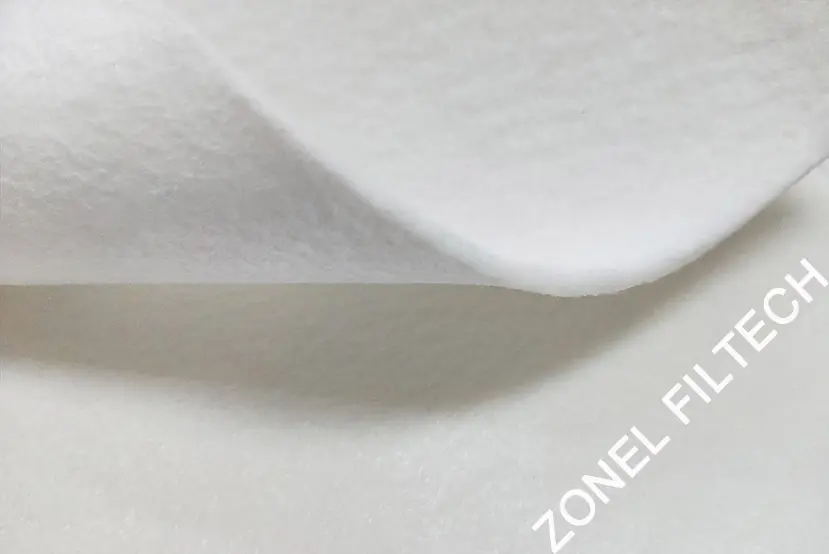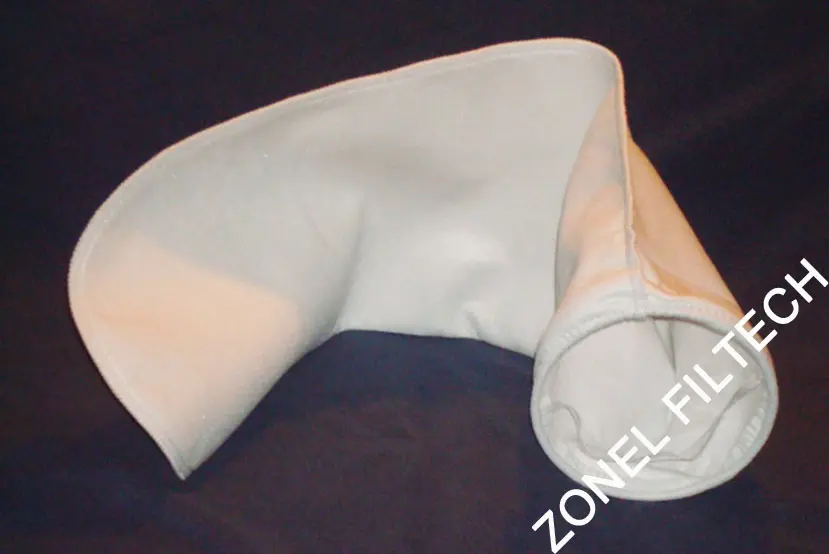In liquid-solid separation processes, choosing the right filtration medium determines not only product quality but also system efficiency and maintenance cost. Among the various options available today, filter cloths and filter bags stand out as two of the most widely used filtration materials in industries ranging from wastewater treatment and chemical manufacturing to food processing and pharmaceuticals.
Although both serve the same purpose — separating solid particles from liquids — their structure, operation, cost, and performance differ significantly. Understanding these differences enables operators to choose the most suitable filtration solution.
Table of Contents
ToggleUnderstanding Liquid Filtration Basics
Liquid filtration involves passing a contaminated liquid through a porous medium that retains solid particles while allowing clean fluid to pass through. The process’s success relies on several critical parameters.
- Micron rating – the particle size the medium can capture (e.g., 1 μm to 200 μm).
- Flow rate – how quickly fluid passes through the filter media.
- Dirt-holding capacity – measures how much solid a filter holds before clogging.
- Chemical and temperature resistance – the ability of the medium to withstand harsh process conditions.
- Service life – the duration a filter can operate efficiently before needing cleaning or replacement.
Filter cloths and filter bags both operate under these principles but differ in their design, form, and application.

What Is Filter Cloth?
Filter cloth is a woven or nonwoven fabric used primarily in filter presses, vacuum drum filters, and other solid-liquid separation systems. It acts as the filtration barrier, trapping solids on its surface or within its weave while allowing the liquid to pass through.
Common materials include:
- Polypropylene (PP) – excellent chemical resistance and durability.
- Polyester (PET) – offers excellent mechanical strength and withstands moderate to high temperatures.
- Nylon (PA) – flexible, abrasion-resistant, and suitable for fine filtration.
- PTFE – for extreme chemical and temperature environments.
Advantages of filter cloth:
- High durability and longevity – can withstand repeated washing and regeneration cycles.
- Excellent precision – customizable pore size and surface finish for micron-level accuracy.
- Cost-effective in the long term – reusable over many cycles, reducing waste and material cost.
- Versatile formats – available in woven, needle-felt, or mesh constructions for specific filtration needs.
Limitations of filter cloth:
- Requires thorough cleaning between cycles.
- Higher upfront installation cost compared to disposable filters.
- May demand skilled maintenance to prevent blinding or cloth damage.
Filter cloths are ideal for continuous or large-scale filtration systems, such as wastewater treatment plants or industrial chemical processes, where the same equipment runs for extended periods and can accommodate cleaning and regeneration.

What Are Filter Bags?
Filter bags are pre-sewn, disposable or semi-reusable filter media made from felt, mesh, or advanced polymer materials. They are typically used in bag filter housings — cylindrical vessels where liquid flows from the inside to the outside of the bag, trapping solids within.
Common filter bag materials include:
- Polypropylene felt – good for general-purpose filtration.
- Polyester felt – suitable for higher-temperature liquids.
- Nylon mesh – for applications requiring high flow rates and lower solids load.
- PTFE and fiberglass – for chemical resistance and high-temperature operations.
Advantages of filter bags:
- Easy installation and replacement – Quick setup, minimal labor or special tools.
- Low initial cost – inexpensive and widely available.
- Quick maintenance – ideal for processes requiring frequent filter changes.
- Compact and clean operation – no need for washing or drying facilities.
Limitations of filter bags:
- Shorter lifespan compared to filter cloths.
- Less suited for heavy solid loads.
- Disposal generates more waste.
- Potential risk of bypass leaks if sealing is poor.
Filter bags are favored in batch processing, small-scale systems, and mobile filtration setups, such as paint, ink, food, or chemical production lines where convenience and quick turnaround matter most.
Key Comparison: Filter Cloth vs. Filter Bags
The table below highlights key performance differences between these two filtration options.
| Parameter | Filter Cloth | Filter Bags |
| Material Options | Polypropylene, Polyester, Nylon, PTFE | Felt, Mesh, PTFE, Polypropylene |
| Reusability | Washable and reusable | Typically single-use or limited reuse |
| Filtration Precision | High (1–100 μm) | Moderate (5–200 μm) |
| Flow Rate | Moderate | High |
| Maintenance | Requires washing/regeneration | Easy replacement |
| Durability | Long service life | Shorter service life |
| Cost Structure | Higher upfront, lower long-term | Lower upfront, higher replacement frequency |
| Typical Use | Filter presses, drum filters | Bag filter housings |
| Best For | Continuous or heavy-duty filtration | Batch or low-volume filtration |
In short, filter cloths deliver greater accuracy and longevity, while filter bags offer speed, convenience, and affordability.
Applications Across Industries
Both filter cloths and filter bags are widely used across industries, though each shines in different process conditions.
Filter Cloth Applications:
- Water and wastewater treatment: Sludge dewatering, primary clarification, and fine solids removal.
- Chemical manufacturing: Catalyst recovery, brine purification, and acid/alkali separation.
- Food and beverage: Filtration of edible oils, sugar syrups, and juices.
- Mining and metallurgy: Concentrate recovery and tailings dewatering.
- Pharmaceuticals: Fine separation of active ingredients and biomass recovery.
Filter Bag Applications:
- Paints, coatings, and inks: Removing pigments and agglomerates.
- Electroplating and metal finishing: Clarifying process solutions and removing particulates.
- Food processing: Filtration of syrups, milk, and edible oils in batch systems.
- Chemical and resin industries: Capturing fine contaminants in liquid chemicals.
- Water purification: Pre-filtration before reverse osmosis or ultrafiltration units.
Choosing the Right Option for Your Process
Selecting between filter cloth and filter bags requires analyzing your system’s operational and economic needs. The decision depends on several factors:
Filtration Purpose
- Clarity-focused processes (e.g., pharmaceuticals or food-grade liquids) benefit from cloth filters with fine micron ratings.
- Throughput-focused processes (e.g., cooling water or lubricants) favor filter bags for faster flow and easier maintenance.
Particle Load and Liquid Viscosity
- High solids or viscous slurries are better managed with filter cloths due to superior strength and cleanability.
- Low-solids or light fluids can efficiently use filter bags.
Operating Temperature and Chemical Compatibility
- Filter cloths can be made from advanced polymers like PTFE or aramid for high-temperature, corrosive environments.
- Filter bags suit moderate-temperature, chemically stable applications.
Maintenance and Labor Capability
- If your facility has maintenance staff for cleaning and reinstallation, filter cloths provide long-term savings.
- If downtime reduction and quick changes are key, filter bags are more practical.
Cost and Sustainability
- Evaluate not just initial purchase cost but also lifespan, disposal cost, and environmental footprint.
Maintenance and Replacement Considerations
Proper maintenance ensures consistent filtration quality and extends media lifespan.
For Filter Cloth:
- Periodic backwashing, chemical cleaning, or ultrasonic cleaning restores permeability.
- Regular inspection prevents clogging, stretching, or surface damage.
- Automated cloth washing systems in filter presses minimize downtime.
For Filter Bags:
- Replace bags when differential pressure exceeds recommended limits (usually 1–2 bar).
- Avoid overtightening or misalignment during installation to prevent leaks.
- Dispose of used bags following local environmental regulations or explore recyclable options.
The following table summarizes maintenance aspects for both media:
| Aspect | Filter Cloth | Filter Bags |
| Cleaning Frequency | Periodic (weekly/monthly) | Replace after each cycle or pressure limit |
| Cleaning Method | Water/chemical wash, backflush | Disposal or limited rinse |
| Downtime Impact | Moderate | Minimal |
| Environmental Impact | Low (reusable) | Higher (disposable) |
Environmental and Cost Implications
Environmental sustainability is increasingly influencing filtration system design. Reusable filter cloths significantly reduce waste generation compared to single-use bags. However, the cleaning process requires water and energy, which must be considered in total lifecycle assessments.
Filter bags, though easier to handle, contribute more to solid waste unless recyclable materials are used. Modern bag manufacturers now offer eco-friendly felt and mesh materials designed for lower environmental impact.
The cost balance lies between upfront investment and long-term operational convenience.
- Filter cloths cost more but last longer with less waste.
- Filter bags cut labor but raise ongoing material expenses.
A long-term cost analysis typically shows that filter cloths are more economical for continuous, heavy-duty systems, while filter bags remain cost-effective for intermittent or small-scale processes.
Both filter cloths and filter bags play crucial roles in modern liquid filtration. The choice between them hinges on your process priorities: precision and reusability versus convenience and simplicity.
If your operation demands high durability, fine filtration, and long-term cost efficiency, filter cloths are the superior option. However, if quick maintenance, lower capital investment, and fast changeovers are more important, filter bags may be the better fit.
In short:
- Choose filter cloths for continuous or high-solid industrial applications.
- Choose filter bags for smaller, flexible, or batch filtration systems.
A well-informed decision not only enhances filtration performance but also optimizes operational costs, energy use, and environmental sustainability. Whether you select cloth or bags, matching your filtration medium to your process conditions is the key to achieving clean, efficient, and consistent liquid filtration.
